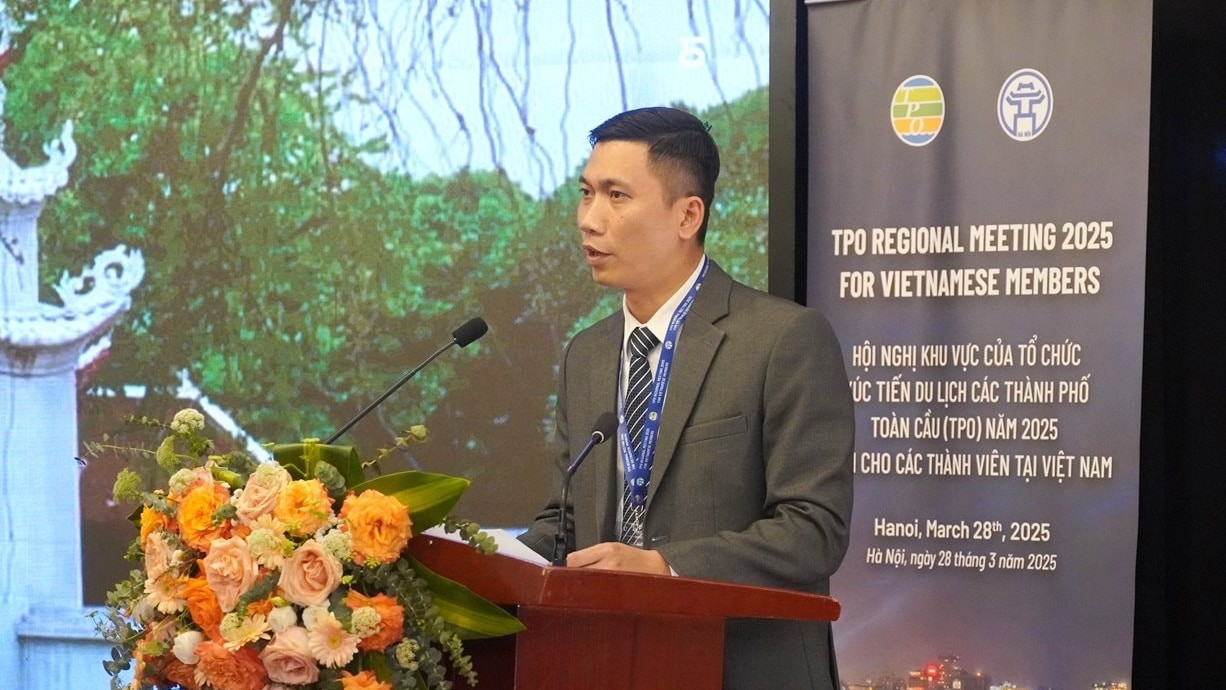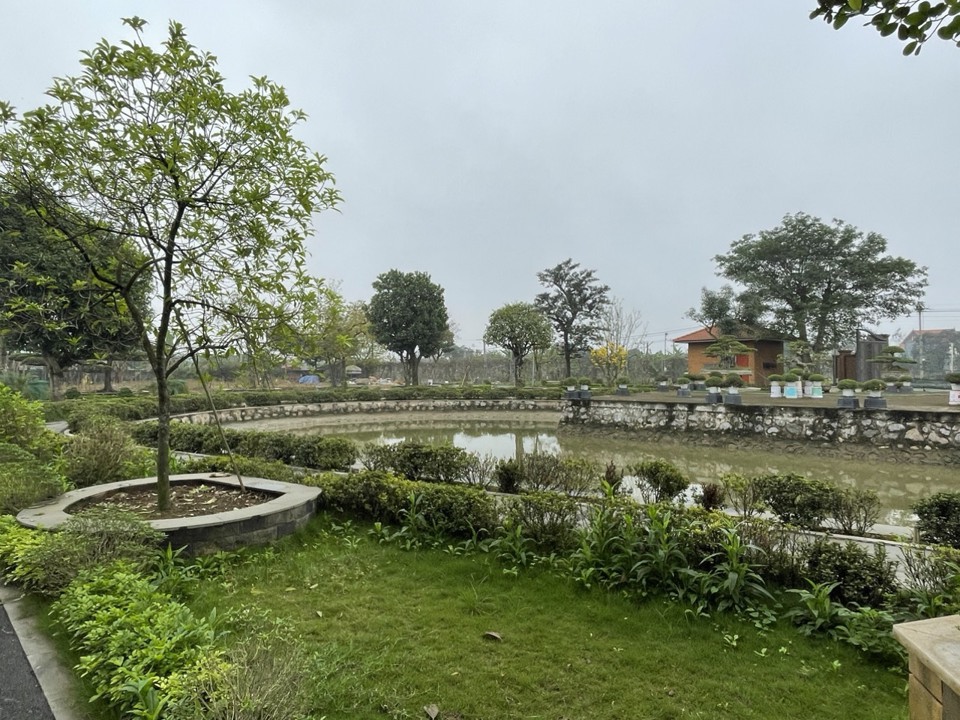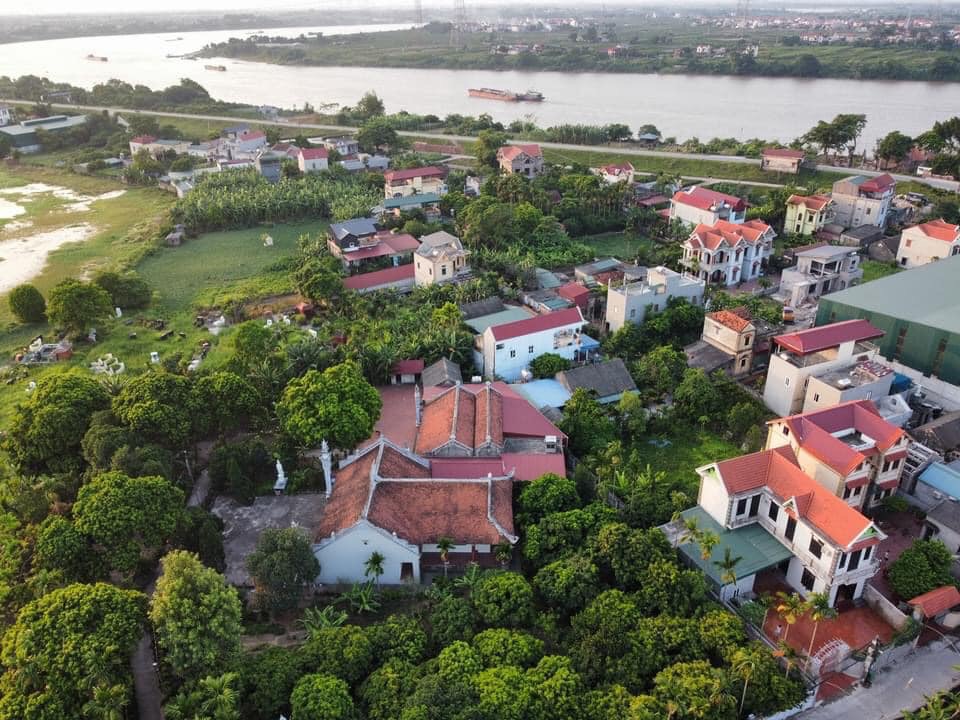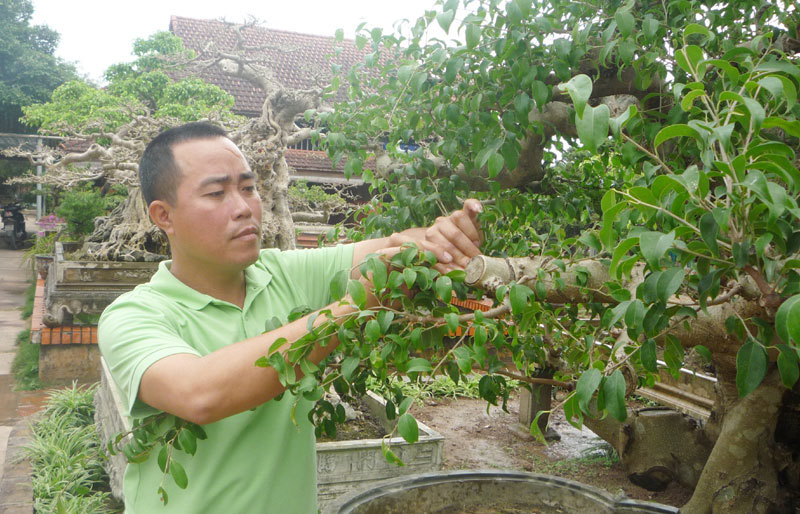Explore ASEAN-awarded “worth-living countryside” in Hanoi
Hanoi’s suburban villages are undergoing a transformation, emerging as a vibrant rural tourism hub for the capital.
THE HANOI TIMES — Just traveling 20 kilometers from downtown Hanoi, tourists could totally leave the hustle and bustle of the city behind to be immersed in Hong Van Commune, a "livable countryside," which got the ASEAN Community-Based Tourism Award for its contributions to sustainable tourism development in 2024.

Nguyen Van Phuong, Vice Chairman of Hong Van People's Committee, talks about the pillars and direction of Hong Van Tourist Area to become a "worth living countryside". Photo: Nguoi Hanoi Online
Starting at 5AM each day, the alleys and restaurants of Hong Van Tourist Area in Hong Van Commune, Thuong Tin District come alive, welcoming visitors who come for a reason: to breathe fresh air and enjoy the peaceful landscape formed by vegetable fields, peach blossoms, ornamental plants, and aquaculture zones.
During the day, the streets are often filled with locals engaging in physical activities and tourists exploring the area. As night falls, the lights illuminate the surroundings, creating an inviting atmosphere for those looking to experience the ecotourism model.
While groups of tourists frequent the area every evening, weekends are the busiest. Popular activities include class and alumni reunions, as well as family vacations. After enjoying sightseeing and team-building activities in the beautifully designed green gardens, many visitors dine in the halls. Group sizes typically range from a few families to dozens of people from the same class or organization.
Eight pillars of tourism development
According to Nguyen Van Phuong, Vice Chairman of the People's Committee of Hong Van Commune, Hong Van Tourist Area is one of the first city-level community-based tourism areas and winner of the ASEAN Community-Based Tourism Award 2024.
"Each year, we welcome hundreds of thousands of visitors to our peaceful suburban area, where no entrance fee is charged. Guests are only required to pay for the products and services they choose to enjoy," said Phuong.
Taking advantage of each village's name, historical tradition, landscape construction movement, and economic transformation, Hong Van Commune has created a green, ecological, and unique agricultural area, inviting visitors from near and far to experience community-based tourism.
The Hong Van Tourist Area is being developed around eight key themes that highlight the region’s rich cultural and natural heritage. These include traditional spiritual and cultural tourism tied to the legendary story of Chu Dong Tu and Tien Dung, as well as ornamental plant villages showcasing local flora.
The area also celebrates unique products from the Red River Delta, while emphasizing family traditions, neighborly love, and authentic local cuisine. Visitors can immerse themselves in farming experiences, enjoy the tranquil view of afternoon blue smoke rising from the Red River dyke, and explore the coastal area, which features Fairy Flower Island, Fairy Beach, and the Love Festival. Additionally, the area offers an enriching cultural experience with its folk melodies, reflecting the region’s vibrant heritage.

Scenic views of Hong Van Ornamental Plants Craft Village. Photo: Cong Tam/ The Hanoi Times
Phuong said the commune continues to research and invest in the development of creative tourism products, including food tourism, where tourists can explore the cuisine of the northern countryside, typical Red River dishes, cooking classes, and food festivals.
Or "art tourism", which takes visitors to galleries or exhibitions of ancient objects typical of the northern countryside, revolutionary tradition halls, festivals, and traditional art performances such as cheo (Vietnamese operetta) singing, quan ho (love duet) singing, senh tien (lion) dance. There are also contemporary elements such as bolero tea rooms and street art performances. In addition, tourists visit the ecological space along the Red River dyke, the floodplain, and the water surface.
"We are working to diversify its tourism products and strengthen ties with tourism businesses and travel agencies while applying science and technology, boosting digital transformation, using social networking platforms, and adding more cultural activities to promote products," said Phuong.
"We will proactively improve the quality of accommodation, food, transportation, and tour guide services, especially prioritizing human resources equipped with foreign language skills while improving the living environment," he aided.

Bird's eye view of Hong Van Commune on the outskirts of Hanoi. Photo: Cong Tam/ The Hanoi Times
Tourists can visit the renowned hundred-craft land of Thuong Tin, with historical sites such as Dau Pagoda, Nguyen Trai Temple, or localities in the core area of Chu Dong Tu - Tien Dung legend. The spiritual and cultural tour "Exploring Ancient Tales" from Hong Van to the Special National Relic Site of Da Hoa - Da Trach (Khoai Chau District, Hung Yen Province) aims to become an attractive highlight in the Kinh Ky - Pho Hien heritage journey.

Bonsai artist Pham Van Quynh, Hong Van Ornamental Plants Craft Village, Thuong Tin District, Hanoi. Photo: Nguyen Nga/ The Hanoi Times
Meanwhile, local authorities have organized "educational tourism" for students and young travelers to learn about traditional culture and history, experience folk games, cultural exchanges, and the northern rural space.
Among the programs offered there, "Agri-tourism - Ornamental Plant and Stone Sculpture Villages" allows tourists to acquire knowledge and skills in agriculture, as well as learn about stone sculpture, the Ornamental Plant Village, whose products have been recognized as four-star OCOP (One Commune, One Product) items in Hong Van Commune.
The local authorities are also planning to make the area a venue for "MICE tourism events" to tap potential of the ASEAN-awarded destination.








